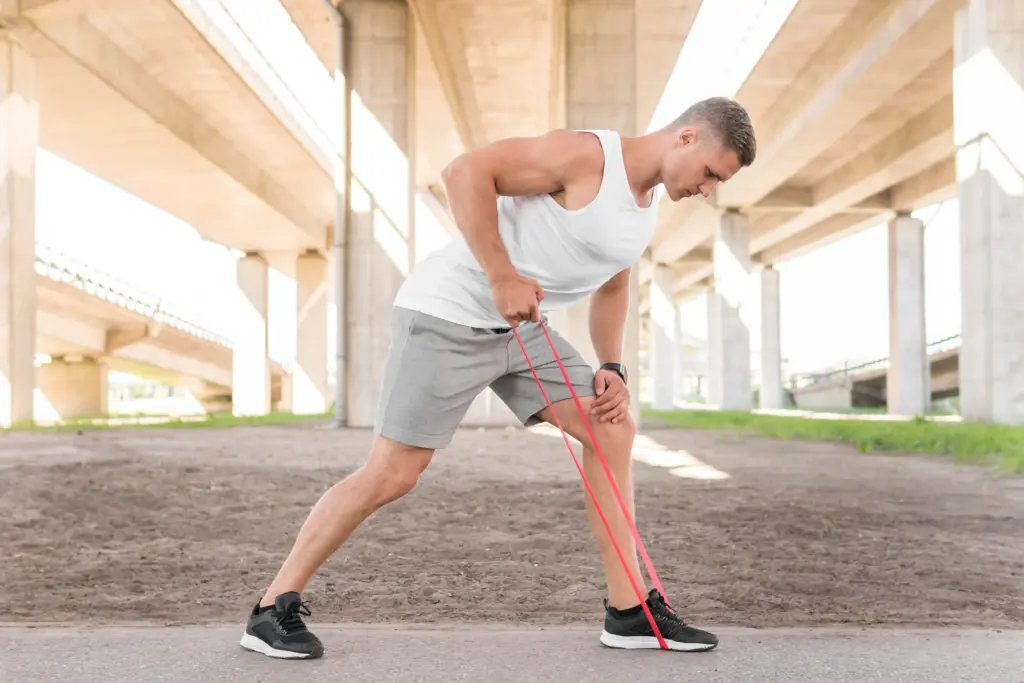Advanced Unilateral Knee Replacement Surgery
Get advanced Unilateral Knee Replacement for pain-free movement and lasting joint health

Unilateral Knee Replacement
Unilateral Knee Replacement (UKR), also known as partial knee replacement, is a surgical procedure in which only one side of the knee joint is replaced. Unlike Total Knee Replacement (TKR), where the entire knee joint is replaced, UKR focuses on replacing only the damaged or worn-out portion of the knee. This procedure is often performed on patients suffering from osteoarthritis, rheumatoid arthritis, or knee injuries that have affected only one part of the knee.
In Unilateral Knee Replacement, the surgeon removes the damaged cartilage and bone from one part of the knee joint (typically the inner or medial compartment) and replaces it with a prosthetic component. The healthy parts of the knee, including the other compartments, are left intact. The goal of the surgery is to alleviate pain, improve mobility, and restore the function of the knee without the need for a full knee replacement.
UKR offers several advantages over TKR, such as a quicker recovery time, a smaller incision, less blood loss, and the preservation of more natural knee tissue. This procedure is especially suitable for older patients with localized knee damage or those who want to preserve as much of their knee joint as possible.

Early Detection Saves Lives
Early detection and treatment are crucial for improving the chances of survival. If you notice any concerning symptoms, consult a healthcare provider immediately.
Unilateral Knee Replacement
Persistent Knee Pain
Chronic pain that is not relieved by over-the-counter medications, physical therapy, or lifestyle changes, especially when walking or standing.
Knee Stiffness
Difficulty bending or straightening the knee, or the sensation of the knee locking or giving out.
Limited Range of Motion
A decreased ability to perform activities that require bending the knee, such as climbing stairs or getting in and out of a car.
Swelling and Inflammation
Frequent swelling in the knee joint, especially after activities like walking, standing, or exercising.
Decreased Functionality
Difficulty performing everyday tasks due to knee pain or stiffness, such as walking, bending, or squatting.
Blood in Urine
Hematuria - pink, red, or dark urine, the most common symptom
Frequent Urination
Feeling the need to urinate frequently, even when bladder is not full
Painful Urination
Experiencing pain or burning sensation while urinating
Back or Pelvic Pain
Pain that occurs as the cancer grows and spreads
Unexplained Weight Loss
Significant weight loss not related to diet or exercise
Fatigue
Feeling unusually tired or weak without a clear cause
Meet Our Expert Unilateral Knee Replacement
Unilateral Knee Replacement
Smoking
Smoking is one of the leading causes of bladder cancer. Chemicals in tobacco smoke can damage the lining of the bladder, increasing the risk.

Gender
Men are at a higher risk of developing bladder cancer than women.

Chronic Bladder Infections or Inflammation
Conditions such as bladder infections and long-term bladder inflammation can increase the risk.

Exposure to Chemicals
Prolonged exposure to certain chemicals, especially those used in the dye industry, rubber production, and chemical manufacturing, increases the risk.

Age
As people age, the cartilage in the knee joint naturally wears down, making older adults more susceptible to knee arthritis and joint damage.

Osteoarthritis
This is the most common cause of knee damage requiring UKR. Osteoarthritis causes the cartilage in the knee joint to break down, leading to pain, stiffness, and reduced mobility.

Rheumatoid Arthritis
An autoimmune condition that can affect the knee joint, causing inflammation, joint damage, and pain.

Previous Knee Injuries
Past knee injuries, such as fractures, ligament tears, or meniscal damage, can lead to joint degeneration and increase the need for UKR.

Obesity
Excess weight puts additional pressure on the knee joints, which can accelerate the wear and tear of cartilage, leading to knee arthritis.

Genetics
A family history of knee problems or joint disorders can increase the risk of developing knee issues that may require surgery.

Sedentary Lifestyle
Lack of exercise can lead to muscle weakness and poor joint stability, increasing the strain on the knee.

Unilateral Knee Replacement
Diet and Nutrition
Prevention
Diagnosis
Key Services
Key Facilities
Proper nutrition plays an essential role in managing knee health and supporting recovery after Unilateral Knee Replacement surgery:
- Calcium and Vitamin D: These nutrients are essential for maintaining strong bones. Foods like dairy products, leafy greens, and fortified cereals are excellent sources of calcium, while Vitamin D can be obtained from sunlight and foods like fatty fish and fortified foods
- Protein-Rich Foods: Protein is crucial for healing after surgery and maintaining muscle mass. Lean meats, fish, eggs, legumes, and dairy products provide high-quality protein
- Anti-Inflammatory Foods: Incorporating anti-inflammatory foods like salmon, walnuts, flaxseeds, ginger, and turmeric into your diet can help reduce inflammation in the knee joint and speed up recovery.
- Omega-3 Fatty Acids: Found in fatty fish like salmon, flaxseeds, and walnuts, omega-3s help reduce inflammation and support joint health
- Hydration: Staying hydrated supports overall health, including joint lubrication and circulation, which is important for post-surgery healing
- Weight Management: Maintaining a healthy weight reduces stress on the knee joint, which can help prevent further damage and support the healing process after surgery.
Although some risk factors for Unilateral Knee Replacement are unavoidable, there are several ways to prevent or delay the need for surgery:
- Exercise Regularly: Engage in low-impact exercises like swimming, biking, and walking to strengthen the muscles around the knee joint and improve joint stability
- Maintain a Healthy Weight: Keeping a healthy weight reduces the strain on the knee joints, preventing excessive wear and tear and reducing the likelihood of arthritis
- Stretching and Flexibility: Regular stretching exercises can help improve flexibility and maintain a full range of motion in the knee
- Protect Your Knees: Use proper techniques during physical activities to avoid injury. Wear knee pads or protective gear if participating in high-risk sports
- Posture Awareness: Proper posture and body mechanics, especially when standing or sitting, can help alleviate unnecessary pressure on the knees
- Fall Prevention: For older individuals, preventing falls is key to protecting knee health. Remove tripping hazards in the home and use assistive devices if needed.
A comprehensive evaluation is necessary to diagnose the need for Unilateral Knee Replacement:
- Physical Examination: The doctor will assess the knee’s range of motion, check for tenderness or swelling, and evaluate how the knee functions during movement.
- X-Rays: X-rays are crucial in assessing the extent of damage to the knee joint, including cartilage wear and bone changes. They help determine if Unilateral Knee Replacement is needed.
- MRI or CT Scans: In some cases, an MRI or CT scan may be ordered to provide a more detailed view of the knee joint, especially when soft tissue damage or complications need to be evaluated.
- Blood Tests: Blood tests may be conducted to rule out other underlying conditions or infections, though these are typically not the primary diagnostic tool for knee replacement.
After reviewing the test results, the healthcare provider will recommend whether Unilateral Knee Replacement is the most suitable treatment option.
Several services are provided by hospitals or clinics performing Unilateral Knee Replacement to ensure the best outcomes for patients:
- Pre-Operative Consultation: A thorough assessment of the patient’s medical history, diagnostic tests, and a discussion of the surgical procedure.
- Pain Management: Pain control techniques such as medications, nerve blocks, and physical therapy to ensure comfort before, during, and after surgery.
- Physical Therapy: Rehabilitation programs designed to help patients regain strength, mobility, and flexibility after surgery.
- Post-Surgery Care: Monitoring and follow-up visits to ensure proper healing and address any complications early.
- Orthopedic Expertise: Skilled orthopedic surgeons who specialize in knee surgery, using the latest surgical techniques to ensure the best possible outcomes.
Hospitals and clinics offering Unilateral Knee Replacement should have advanced facilities to ensure the patient’s safety and comfort:
- Modern Surgical Theaters: State-of-the-art surgical theaters equipped with the latest technology to perform precise and minimally invasive knee replacement surgeries.
- Rehabilitation Centers: On-site physical therapy services to help patients with post-surgery recovery, focusing on strengthening muscles and restoring knee function.
- Recovery Rooms: Comfortable recovery rooms with nursing care to monitor the patient’s condition after surgery and support their initial healing process.
- Orthopedic Departments: Specialized orthopedic teams who focus on joint health, ensuring that patients receive the best care and advice throughout their treatment.
- Post-Surgery Monitoring: Dedicated units for monitoring recovery and managing complications such as infection, blood clots, or stiffness.
Top Medical Facilities at Our Multispeciality Hospital – Here’s What Makes Us Different!
Ready to Begin Your Unilateral Knee Replacement Journey?
Learn More About Unilateral Knee Replacement Care
Frequently Asked Questions
Recovery from Unilateral Knee Replacement typically takes about 6 weeks to 3 months. Most patients can begin walking with assistance within a few days, but full recovery, including regaining strength and mobility, may take up to 6 months. Physical therapy is essential for restoring knee function.v
As with any surgery, Unilateral Knee Replacement carries risks such as infection, blood clots, nerve damage, or knee stiffness. However, these risks can be minimized by following the surgeon’s advice and receiving proper post-surgery care. It’s important to attend follow-up appointments to monitor progress.
A Unilateral Knee Replacement can last anywhere from 15 to 20 years, depending on factors like age, activity level, and the materials used for the prosthesis. Regular check-ups are essential to monitor the condition of the knee implant and ensure it remains functional.
